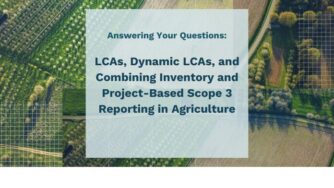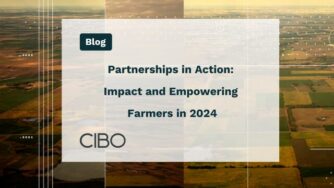When the Inflation Reduction Act (IRA) passed in 2022, it included a section that created a tax credit for renewable fuels producers: the Clean Fuel Production Credit (CFPC), sometimes referred to as the “Section 45Z” or “45Z” tax credit. This new credit will apply beginning January 1, 2025, replacing a handful of existing fuel industry tax credits that expire at the end of 2024.
The 45Z tax credit will reward renewable fuel producers for lowering the carbon intensity (CI) score of their fuel. CI is a measure of the amount of greenhouse gas (GHG) emitted per unit of output. The fuel industry measures CI by kilogram of carbon dioxide equivalent per million British thermal units (kg/mmBtu). Just like your golf score, the lower your CI score, the better – for the environment and maximizing your company’s tax credit.
While the 45Z tax credit has yet to go into effect, reducing fuel CI is not new to the industry. In July of 2021, the Renewable Fuels Association, representing over 150 of the largest low-carbon corn growers, ethanol producers, co-ops and big ag companies, sent a letter to U.S. President Joe Biden outlining their commitment to achieving a net-zero carbon footprint by 2050 or earlier. Additionally, most independent producers, including all of the Renewable Fuels Association membership, have signed a pledge to be at a 70% CI discount to gasoline by 2030. The industry has been on the path toward reducing emissions, and the latest tax credits increase their incentives to keep doing so.
The U.S. federal government has determined that the Greenhouse Gases, Regulated Emissions, and Energy Use in Transportation (GREET) model, developed by Argonne National Labs, can determine CI scores of sustainable aviation fuel (SAF) feedstocks. An updated version of the GREET model will soon be available for this purpose. When guidance for other types of renewable fuels like diesel and ethanol is issued, the industry expects that GREET will be a selected model for those tax credits.
There are multiple technologies and approaches to lowering the CI score of renewable fuels. One way producers achieve this is by sourcing from farmers who implement carbon-reducing practices like cover cropping and reduced tillage. They may analyze their supply sheds and target growers already producing low-CI crops or create incentive programs to reward farmers who implement new practices. Both are strategies that CIBO enables via CIBO Impact, our scaled software platform for developing, deploying and managing grower-facing low-CI programs. Enterprises using CIBO Impact can utilize GHG modeling and computer vision technologies to get instant visibility into their carbon footprint and feedstock CI score at any scale, from field- to supply-shed-level, and use that information to target and create programs to lower the CI scores of their feedstocks.
As guidance for the renewable fuels industry continues to be released by the U.S. government, CIBO is keeping abreast so we can partner with producers and deliver on our shared goal of reducing the CI score of crops grown as biofuel feedstocks. We invite you to check back soon for some upcoming news about our latest platform enhancements for the renewable fuels space.



